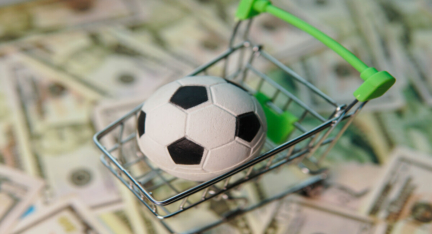The world of collegiate athletics is currently navigating a complex landscape of Name, Image, and Likeness (NIL) laws, with varying regulations across different states. As we explore this issue, it’s clear that standardization is necessary to provide clarity for athletes, universities, and fans alike.
We are witnessing a significant shift in the way collegiate athletics operate, with the potential for federal legislation to play a crucial role in shaping the future of NIL laws. By standardizing these regulations, we can ensure a more level playing field and provide athletes with the clarity they need to navigate this complex landscape.
Key Takeaways
- The current NIL laws landscape is complex and varies across states.
- Federal legislation has the potential to standardize NIL laws.
- Standardization can provide clarity for athletes, universities, and fans.
- A more level playing field can be achieved through standardized regulations.
- Athletes will benefit from clearer guidelines on NIL laws.
The Evolution of NIL Rights in Collegiate Athletics
The evolution of NIL rights in collegiate athletics reflects a broader conversation about amateurism and athlete compensation. As we explore this topic, it’s essential to understand the historical context that has shaped the current landscape.
From Amateurism to Compensation
The traditional NCAA model, which emphasized amateurism, has been a cornerstone of collegiate athletics. However, this model has faced numerous challenges over the years.
The Traditional NCAA Model
The NCAA’s initial stance on amateurism prohibited athletes from receiving compensation for their name, image, and likeness. This policy was designed to maintain the integrity of collegiate sports.
Early Challenges to Amateurism
As the commercialization of collegiate sports grew, so did the scrutiny of the NCAA’s amateurism policies. Early challenges laid the groundwork for future reforms.
Landmark Court Cases That Changed the Game
Several landmark court cases have significantly impacted the NCAA’s stance on NIL rights.
O’Bannon v. NCAA
In O’Bannon v. NCAA, the court ruled that the NCAA’s restrictions on athlete compensation violated antitrust laws. This decision marked a significant shift in the conversation around NIL rights.
Alston v. NCAA
The Alston v. NCAA case further challenged the NCAA’s amateurism policies, leading to changes in how colleges and universities could compensate athletes.
The NCAA’s Shifting Position Over Time
The NCAA’s position on NIL rights has evolved significantly over time, influenced by court decisions and changing public perceptions.
| Year | Event | State NIL laws enacted |
|---|---|---|
| 2009 | O'Bannon v. NCAA filed | Impact on NIL Rights |
| 2020 | Alston v. NCAA decision | Further eroded NCAA's control over athlete compensation |
| 2021 | State NIL laws enacted | Created a patchwork of regulations across the country |
Understanding these developments is crucial for appreciating the need for standardized federal NIL laws.
Current State of NIL: A Landscape of Inconsistency
With the absence of a unified federal approach, NIL legislation has devolved into a diverse array of state-specific laws and guidelines. This has resulted in a complex and often confusing landscape for athletes, universities, and athletic departments to navigate.
State-by-State Variations in NIL Legislation
The variability in NIL laws from state to state is significant. Some states have taken a more permissive approach, allowing athletes greater freedom in monetizing their name, image, and likeness. In contrast, other states have implemented more restrictive laws, limiting the ways in which athletes can engage in NIL activities.
Permissive vs. Restrictive State Laws
For instance, California has enacted legislation that prohibits colleges and universities from penalizing athletes for NIL activities, creating a more permissive environment. On the other hand, states like Alabama have laws that restrict certain types of NIL deals, such as those involving alcohol or tobacco brands.
States Without NIL Legislation
Not all states have passed NIL legislation, leaving athletes and institutions in those regions without clear guidelines. This absence of legislation can create uncertainty and potential legal issues for athletes attempting to capitalize on their NIL.
As of now, the landscape looks like this:
| State | NIL Legislation Status | Key Features |
|---|---|---|
| California | Permissive | Prohibits institutions from penalizing athletes for NIL activities |
| Alabama | Restrictive | Restricts NIL deals involving certain brands |
| New York | No Legislation | Pending legislation |
The Resulting Competitive Imbalance
The inconsistency in NIL laws has led to a competitive imbalance among colleges and universities. Institutions in states with more permissive NIL laws may have an advantage in recruiting top talent, as athletes may be more inclined to attend schools where they have greater freedom to monetize their NIL.
“The lack of uniformity in NIL laws puts some schools at a disadvantage. We need a level playing field to ensure fair competition.” – NCAA spokesperson
Challenges for Athletes Navigating Different Rules
Athletes face significant challenges when navigating the varied NIL landscape. They must be aware of the laws in their state and any states they may compete in, ensuring they comply with all relevant regulations.
Difficulties for Universities and Athletic Departments
Universities and athletic departments also face difficulties in managing NIL activities. They must educate athletes on the laws applicable to them and ensure compliance, all while trying to maintain competitive teams.
The current state of NIL legislation highlights the need for a unified federal approach. By standardizing NIL laws, we can create a more equitable and less confusing environment for athletes and institutions alike.
Federal NIL Laws: The Path to Standardization
The inconsistency in NIL laws from state to state has led to a growing call for federal legislation to standardize these regulations. As we navigate the complexities of current NIL regulations, it becomes clear that a unified federal approach could provide much-needed clarity and consistency.
Why National Standards Have Become Necessary
The current patchwork of state-by-state NIL laws has created a challenging environment for athletes, universities, and athletic departments alike. Key issues include:
- Inconsistent regulations across states
- Difficulty in compliance for athletes and universities
- Competitive imbalance due to varying state laws
National standards would help alleviate these issues by providing a clear and consistent framework for all parties involved.
Congressional Interest in NIL Regulation
Congressional interest in NIL regulation has been on the rise, with lawmakers recognizing the need for a federal framework. This growing interest is driven by the recognition that a standardized approach can help protect athletes’ rights, simplify compliance, and create a more level playing field.
Timeline of Federal Legislative Efforts
The journey towards federal NIL legislation has been ongoing, with various proposals being introduced and debated.
Early Proposals and Their Fate
Early proposals laid the groundwork for current legislative efforts, though they faced challenges and ultimately did not pass. These initial attempts were crucial in shaping the conversation around federal NIL laws.
Current Legislative Momentum
Currently, there is significant momentum behind federal NIL legislation, with several bills being considered in Congress. The progress made so far indicates a strong potential for future standardization.
Analyzing Current Federal NIL Proposals
As we examine the landscape of federal NIL legislation, several key proposals emerge. These bills aim to standardize the rules governing Name, Image, and Likeness compensation for collegiate athletes across the United States.
Major Bills in Congress
Congress has introduced several significant bills addressing NIL rights. Two of the most notable are:
Student Athlete Bill of Rights
The Student Athlete Bill of Rights focuses on providing comprehensive protections and rights for student athletes, including fair compensation for their NIL.
College Athlete Economic Freedom Act
The College Athlete Economic Freedom Act aims to establish a federal framework for NIL compensation, ensuring that athletes can benefit economically without compromising their amateur status.
Common Elements Across Proposals
Despite their differences, many federal NIL proposals share common elements. These include:
- Protection against unfair compensation practices
- Disclosure requirements for NIL deals
- Resources and educational guidance for student-athletes
These shared elements indicate a consensus on the need for transparency and fairness in NIL compensation.
Points of Legislative Contention
While there is agreement on many aspects, several points of contention remain among the proposals. These include:
| Issue | Description | Proposed Solutions |
|---|---|---|
| Boosters and Collectives | Regulating the role of boosters and collectives in NIL deals | Stricter oversight, limits on contributions |
| Pay for Play | Distinguishing between legitimate NIL compensation and pay for play | Clear definitions, enhanced monitoring |
| Recruiting Restrictions | Maintaining fair recruiting practices while allowing NIL compensation | Regulating the role of boosters and collectives in NIL deals |
Bipartisan vs. Partisan Approaches
The federal NIL proposals vary in their political approach. Some bills are bipartisan, seeking broad consensus, while others are more partisan, reflecting the political divide on certain issues.
“The challenge lies in finding a balance between regulation and freedom, ensuring that athletes are protected while also being given the opportunity to benefit from their NIL.”
This diversity in approach highlights the complexity of the issue and the need for careful consideration in crafting federal NIL legislation.
Key Stakeholders in the Federal NIL Debate
Understanding the stakeholders in the federal NIL debate is crucial as we navigate the complexities of regulating Name, Image, and Likeness rights in collegiate athletics. The landscape is populated by various entities, each with its own interests and concerns.
NCAA and Athletic Conference Positions
The NCAA (National Collegiate Athletic Association) and athletic conferences play a significant role in shaping NIL policies. The NCAA has evolved from a strict amateurism stance to a more permissive approach, allowing athletes to profit from their NIL. However, the organization continues to advocate for federal regulation to create a uniform set of rules across all states.
Athletic conferences, such as the Pac-12 and SEC, have also been actively involved in the NIL debate. They have expressed concerns about competitive balance and the potential for recruiting violations.
University and Athletic Department Perspectives
Universities and their athletic departments are significantly affected by NIL regulations. They must navigate the complex landscape of state laws and NCAA rules while providing guidance and essential resources to their athletes. Many universities are advocating for clear federal guidelines to simplify compliance and reduce the risk of violations.
Athlete Advocacy Groups and Their Demands
Athlete advocacy groups, such as the National College Players Association (NCPA), have been vocal in their demands for fair treatment and compensation for college athletes. These groups argue that athletes should have more control over their NIL and be able to profit from their own brand without undue restriction.
Corporate Sponsors and Commercial Interests
Corporate sponsors and marketing agencies are increasingly involved in the NIL landscape. They see opportunities to partner with athletes and universities, creating new marketing channels.
Major Brands Already Active in NIL
Several major brands have already entered the NIL space, partnering with athletes and universities to create new marketing opportunities. These brands recognize the potential for growth in this area.
Marketing Agencies and Collectives
Marketing agencies and collectives are emerging to facilitate NIL deals between athletes and brands. These entities help navigate the complex regulatory environment and ensure compliance with existing laws and regulations.
| Stakeholder | Interests | Concerns |
|---|---|---|
| NCAA | Uniform NIL regulations | Maintaining amateurism |
| Athlete Advocacy Groups | Athlete compensation and rights | Exploitation of athletes |
| Corporate Sponsors | Marketing opportunities | Regulatory compliance |
Potential Benefits of Standardized Federal NIL Laws
Federal NIL legislation promises to bring much-needed consistency to the world of collegiate athletics. By establishing a uniform set of rules across the United States, we can anticipate several significant benefits.
Creating a Level Playing Field Nationwide
A standardized system ensures that all colleges and universities operate under the same guidelines, eliminating the competitive imbalance caused by varying state laws. This level playing field allows athletes from different regions to compete fairly for endorsements and sponsorships.
Simplifying Compliance for All Parties
With a single federal law, compliance becomes more straightforward for athletes, universities, and sponsors. This clarity reduces the administrative burden and minimizes the risk of unintentional violations.
Protecting Athlete Rights Consistently
Standardized laws provide consistent protection for athletes across the country, ensuring that their rights are safeguarded regardless of their location or the institution they attend.
Economic Benefits of Regulatory Clarity
The economic advantages of clear regulations are substantial. With a well-defined legal framework, we can expect significant growth in the NIL market.
Market Growth Predictions
Experts predict that a standardized federal NIL law will lead to increased investment in collegiate athletics. A more stable and predictable environment attracts sponsors and investors.
Investment Opportunities
As the market grows, new investment opportunities emerge. This includes not only traditional sponsorships but also innovative financial products and services tailored to collegiate athletes.
| Benefit | Description | Impact |
|---|---|---|
| Level Playing Field | Uniform rules nationwide | Fair competition for endorsements |
| Simplified Compliance | Single federal law | Reduced administrative burden |
| Economic Growth | Consistent protection | Enhanced athlete welfare |
| Uniform rules nationwide | Clear regulations | Increased investment |
By understanding these benefits, we can appreciate the positive impact that standardized federal NIL laws will have on collegiate athletics, creating a more equitable, efficient, and economically vibrant environment for all stakeholders.
Potential Drawbacks and Concerns
Federal NIL laws, while potentially beneficial, also raise several concerns that need to be addressed. As we move towards a more standardized system, it’s crucial to consider the potential drawbacks and how they might impact collegiate athletics.
Fears of Overregulation and Bureaucracy
One of the primary concerns is that federal NIL laws could lead to overregulation, creating a bureaucratic system that stifles innovation and flexibility. The risk of overly complex regulations could result in a system that’s difficult for athletes, universities, and sponsors to navigate.
Impact on State Autonomy and Innovation
Another concern is the potential impact on state autonomy. By standardizing NIL laws federally, there’s a risk that states will lose their ability to innovate and adapt their own policies to suit local needs.
Potential Unintended Consequences
Unintended consequences are a significant worry. For instance:
- Effects on Smaller Schools: Smaller colleges might struggle to compete with larger programs under a standardized system.
- Competitive Balance Issues: The new regulations could exacerbate existing competitive imbalances if not carefully crafted.
Effects on Smaller Schools
Smaller schools may face challenges in complying with federal regulations, potentially putting them at a disadvantage.
Competitive Balance Issues
The regulations could inadvertently create or worsen competitive imbalances if they favor certain types of programs over others.
Constitutional and Legal Challenges
Finally, there’s the potential for constitutional and legal challenges. Any federal legislation will need to withstand legal scrutiny, particularly regarding issues like interstate commerce and individual rights.
As we move forward, it’s essential to weigh these concerns against the potential benefits, ensuring that any legislation is carefully considered and balanced.
Impact Across Different Collegiate Sports
As federal NIL laws take shape, their effects on diverse collegiate sports are coming into focus. The new legislation is expected to have a varied impact across different athletic programs.
Effects on Football and Basketball Programs
Football and basketball programs, being the revenue-generating sports, will likely experience significant changes. Increased financial opportunities for athletes in these sports could lead to a more competitive market for talent acquisition.
The potential for boosted sponsorship deals and enhanced athlete compensation may redefine the landscape of collegiate football and basketball.
Implications for Olympic and Non-Revenue Sports
Olympic and non-revenue sports, on the other hand, may face different challenges and opportunities. While they might not generate as much revenue as football and basketball, federal NIL laws could provide new avenues for exposure and funding.
Gender Equity Considerations in NIL Opportunities
Gender equity is a critical aspect of the NIL debate. Ensuring that female athletes have equal opportunities for compensation is crucial.
Title IX Implications
The impact of NIL laws on Title IX compliance will be significant. Universities must ensure that they provide equitable opportunities for male and female athletes.
Addressing Historical Disparities
Federal NIL laws could help address historical disparities in collegiate athletics by providing more opportunities for underrepresented groups.
By examining the impact of federal NIL laws across different collegiate sports, we can better understand the future of athletics and the potential for growth and equity.
Implementation Challenges and Realistic Timelines
The path to implementing federal NIL laws is fraught with difficulties, from transitioning existing state-based systems to establishing robust enforcement mechanisms. As we move towards a more standardized approach, understanding these challenges is crucial for a smooth transition.
Transitioning from Current State-Based Systems
The current landscape of NIL regulations varies significantly from state to state, creating a complex environment for athletes, universities, and athletic departments to navigate. Transitioning to a federal system will require substantial adjustments, including updating existing policies, educating stakeholders, and potentially overhauling compliance procedures.
Key challenges in this transition include:
- Aligning state laws with federal regulations
- Updating university and athletic department policies
- Educating athletes and staff about the changes
Enforcement Mechanisms and Oversight
Effective enforcement is critical to the success of federal NIL laws. This involves establishing clear compliance requirements and designating federal bodies to oversee the implementation.
Potential Federal Enforcement Bodies
The responsibility for enforcing federal NIL laws could fall to existing agencies such as the Federal Trade Commission (FTC) or newly created bodies within the Department of Education or NCAA.
Compliance Requirements
Clear guidelines on compliance will be essential, including disclosure requirements, permissible forms of compensation, and rules governing the involvement of third-party entities like boosters and agents.
| Compliance Area | Description | Potential Challenges |
|---|---|---|
| Disclosure Requirements | Athletes must disclose NIL deals | Ensuring timely and accurate disclosures |
| Permissible Compensation | Rules on what forms of compensation are allowed | Defining fair market value, avoiding inducements |
| Third-Party Involvement | Regulations on boosters, agents, and other entities | Preventing undue influence, ensuring transparency |
Realistic Timeframes for Legislative Action
The timeline for implementing federal NIL laws will depend on the legislative process, which can be slow and contentious. It’s essential to set realistic expectations and plan accordingly.
Preparing for the Transition Period
As we move towards federal NIL legislation, preparing for the transition is key. This includes educating stakeholders, updating policies, and establishing robust compliance mechanisms.
Conclusion: The Future of Collegiate Athletics Under Federal NIL Regulation
As we consider the potential impact of federal NIL regulation on collegiate athletics, it becomes clear that standardization is crucial for creating a level playing field. The current state-by-state variations in NIL legislation have resulted in a complex and inconsistent landscape, making it challenging for athletes, universities, and athletic departments to navigate.
Implementing federal NIL laws can simplify compliance, protect athlete rights, and provide economic benefits through regulatory clarity. While there are concerns about overregulation and potential unintended consequences, a well-crafted federal framework can mitigate these risks.
Looking to the future of collegiate athletics, we can expect a more streamlined and equitable system under federal NIL regulation. As the landscape continues to evolve, it is essential for stakeholders to work together to ensure that the new regulations foster the growth and development of college sports while maintaining the integrity of the games.
FAQ
What are the current inconsistencies in NIL legislation across different states?
The current state of NIL legislation varies significantly across different states, with some having permissive laws and others having more restrictive laws, creating a complex landscape for athletes and universities to navigate.
How do state-by-state variations in NIL legislation affect collegiate athletics?
State-by-state variations in NIL legislation create a competitive imbalance among colleges and universities, as some institutions are subject to more restrictive laws than others, potentially impacting their ability to attract and retain top talent.
What are the challenges faced by athletes navigating different NIL rules?
Athletes face challenges in understanding and complying with different NIL rules across various states, which can lead to confusion and potential violations, highlighting the need for standardized federal NIL laws.
How do federal NIL laws aim to address the current inconsistencies?
Federal NIL laws aim to create a uniform national standard for NIL compensation, simplifying compliance for athletes, universities, and athletic departments, and providing a level playing field for all institutions.
What are the potential benefits of standardized federal NIL laws?
Standardized federal NIL laws can create a level playing field nationwide, simplify compliance, protect athlete rights consistently, and provide economic benefits through regulatory clarity, ultimately promoting a more equitable and transparent collegiate athletics environment.
What are the concerns regarding the potential drawbacks of federal NIL laws?
Concerns regarding federal NIL laws include the potential for overregulation, impact on state autonomy, and unintended consequences, such as effects on smaller schools and competitive balance issues, highlighting the need for careful consideration and balancing of interests.
How might federal NIL laws impact different collegiate sports?
Federal NIL laws may have varying impacts across different collegiate sports, including football, basketball, Olympic sports, and non-revenue sports, with potential implications for gender equity, Title IX, and addressing historical disparities.
What are the key stakeholders involved in the federal NIL debate?
Key stakeholders in the federal NIL debate include the NCAA, universities, athlete advocacy groups, corporate sponsors, and marketing agencies, each with their own perspectives and demands, highlighting the complexity of the issue and the need for a unified approach.
What is the timeline for implementing federal NIL laws?
The timeline for implementing federal NIL laws is uncertain, but it will likely involve a transition period from current state-based systems, with enforcement mechanisms and compliance requirements to be established, requiring preparation and adaptability from athletes, universities, and athletic departments.
How will federal NIL laws be enforced?
Federal NIL laws will likely be enforced through a combination of federal enforcement bodies and compliance requirements, with potential penalties for non-compliance, highlighting the need for athletes, universities, and athletic departments to understand and adhere to the new regulations.






Leave a Comment